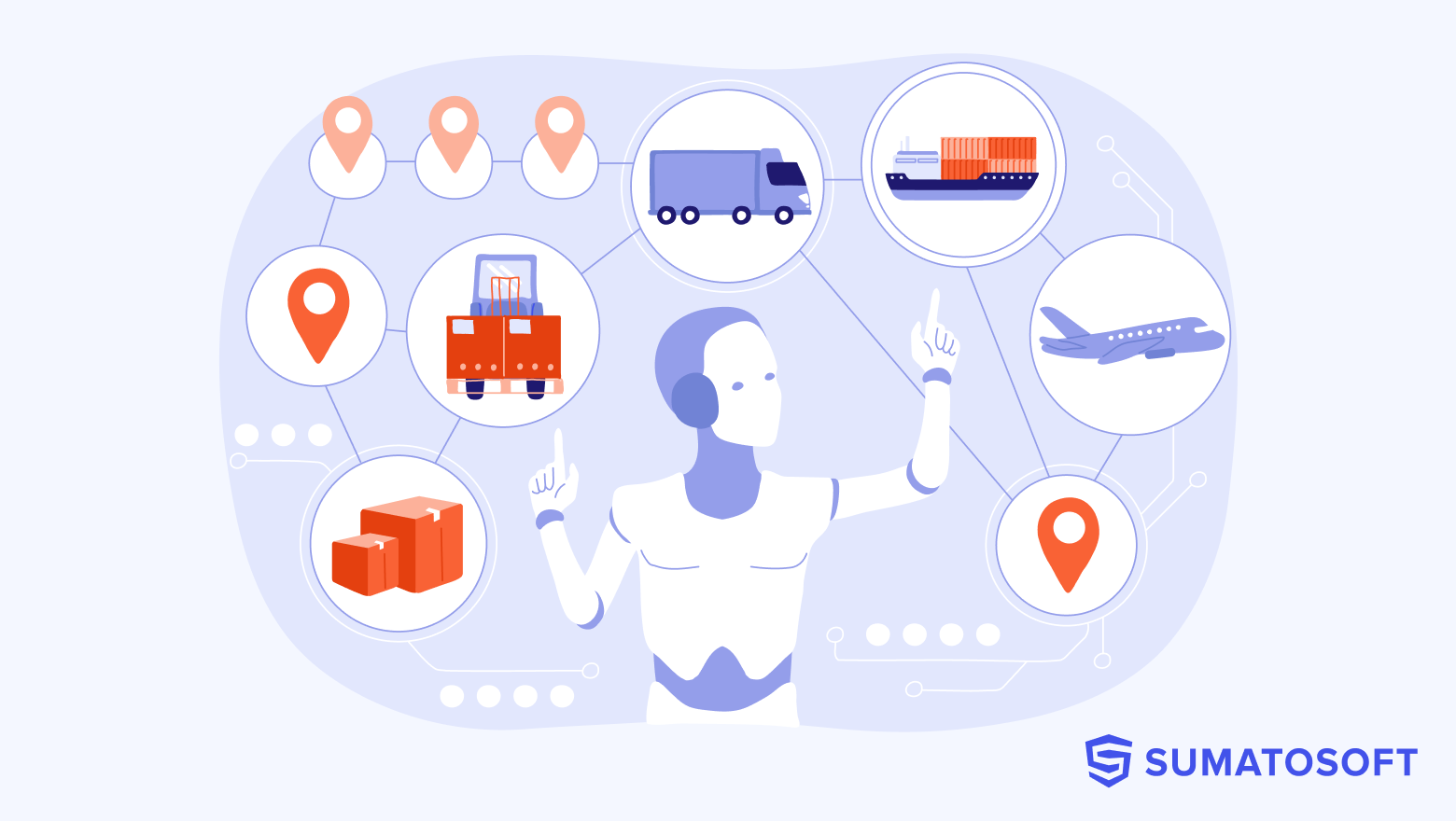How to Calculate the ROI of Custom Software Development
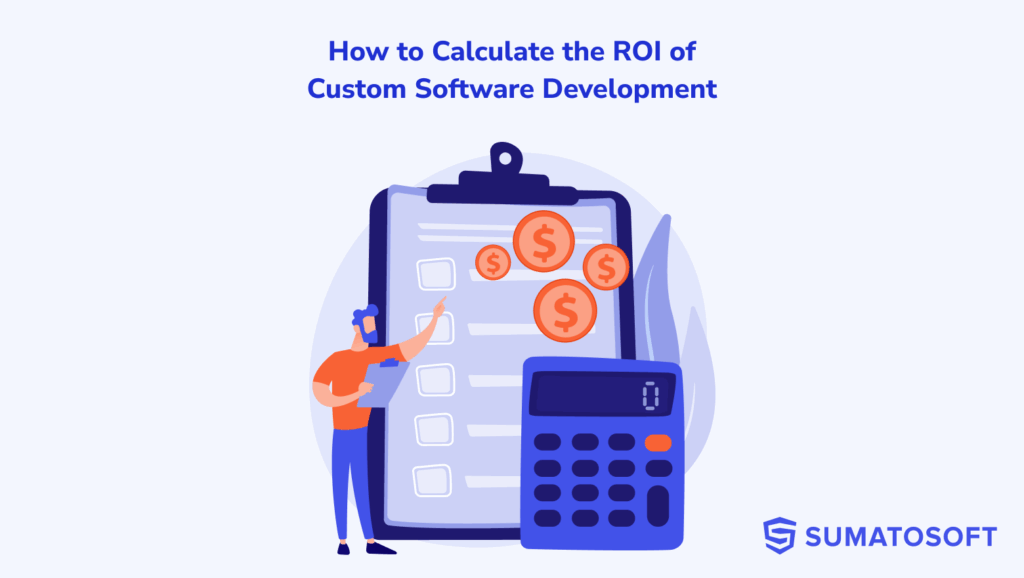
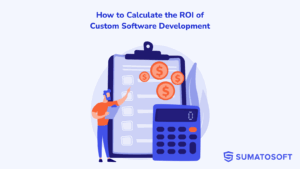
COVID-19 and AI have become a catalyst for digital transformation in businesses, as per the World Bank Group’s report. However, according to McKinsey Global Surveys, the majority of enterprises achieve less than one-third of the impact they expected from their investments in acquiring and developing software solutions, with top economic performers tending to succeed more often than their less fortunate market counterparts.
In this article, we’ll break down the ROI formula for software development step by step and share successful and failed business cases. But first, we’ll settle the build vs. buy dispute regarding ROI.
High-Yielding Software Strategy
McKinsey’s research provides three reasons why top economic performers get higher returns on their investments into digitalization, and one of the reasons is “the degree to which they are disproportionately building […] proprietary assets, such as software, AI, and data.”
Of course, there are plenty of off-the-shelf software solutions that are way more affordable than custom development, have straightforward delivery, can be demoed, and are already time-tested; and nearly two-thirds of the surveyed business leaders said that their companies have chosen to invest in such software solutions. However, these companies haven’t achieved the success of their peers who decided to go with custom enterprise software development.
Top economic performers choose more bold business strategies that require developing custom software. Custom solutions help companies escape vendor lock-in, get a tailored approach to their business challenges, increase company valuation, and, according to nearly 70 percent of the surveyed, differentiate themselves from the competition.
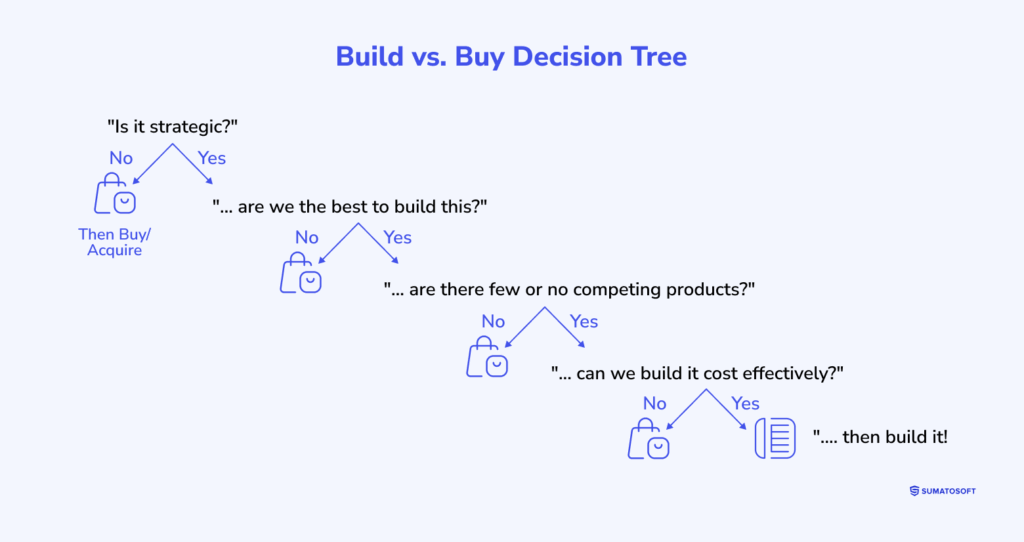
Сonventional wisdom has it that custom software development is always expensive, borderline out of reach. Indeed, a development project in the US with an in-house crew of frontend and backend developers, a QA engineer, a designer, a project manager, and an architect can easily cross six figures in just one year. The real issue to solve here for decision-makers is whether such an investment delivers measurable value for a business.
Custom development can equally transform operations and drain budgets with nothing to show for it. That’s why it’s critical to calculate return on investment (ROI). If calculated correctly, ROI gives organizations a way to quantify benefits such as revenue growth, efficiency gains, cost savings, and risk avoidance against the total cost of ownership.
How to Calculate ROI for Custom Software Projects
Let’s establish the basic understanding of ROI. This metric helps companies evaluate the profitability of their investment according to the following formula:
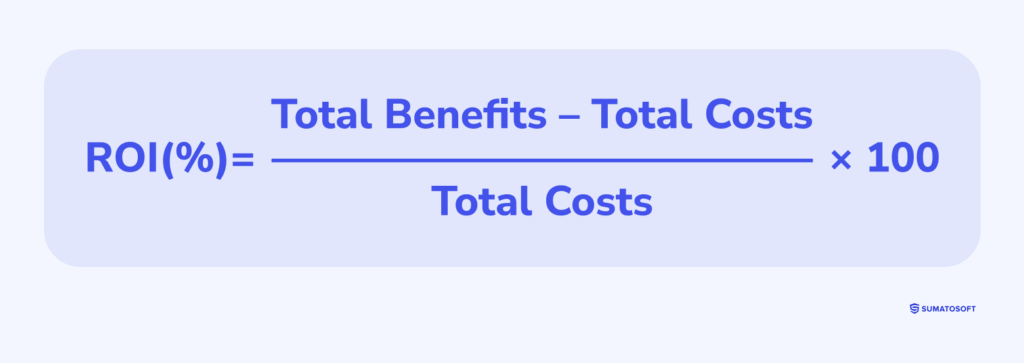
Where:
- Total Benefits = All quantifiable financial gains over the ROI period (revenue increase, cost savings, avoided losses, productivity gains).
- Total Costs = All direct and indirect costs tied to the project.
The comparison between how much a company invested and how much it earned provides a calculation of the investment efficiency.
The distinguishing trait in custom software ROI is the benefits part of the formula. It includes revenue uplift and cost reduction over a defined period, usually 12 to 36 months. The costs part of the formula includes the total cost of ownership (TCO): build, licenses, cloud, support, training, adoption, and change management. ROI translates technical scope into financial impact so business leaders can compare initiatives on equal terms.
On top of that, there are additional factors that should be taken into account. When investing in custom software development, ROI calculation isn’t as straightforward as the formula above indicates.
Significant Contributing Factors
User Experience
The first significant but non-obvious factor affecting ROI is user experience. This is especially applicable for customer-facing software, although it’s advisable not to cut corners even when getting solutions developed for internal use (you’ll see why further when we dissect Avon’s case).
High-quality customer experience directly translates into higher ROI through:
- Lower customer acquisition costs,
- Higher retention rates,
- Lower or no onboarding costs.
UX ROI can be measured using historical data and comparing the before and after values of CAC, retention rate, and onboarding costs.
Automation
The second significant factor is process automation, which is usually what companies chase when introducing digitalization into their businesses. To measure the efficiency of automation, it makes sense to divide business processes into smaller stages, prioritize them according to your needs, and re-measure ROI after implementing each stage to make sure you don’t waste your money.
ROI savings due to process automation are calculated according to the following formula:

Process automation reduces manual work and, consequently, the amount of human errors. This also helps drive down the costs by reducing headcount.
One of the formulas for calculating the annual savings on the reduction of human errors is the following:

Lifecycle ROI in Software Development
ROI calculation should be applied to the entire lifecycle of a software solution. We’re going to review ROI calculation at two levels: Year-1 ROI (what most CFOs expect to see) and a multi-year, discounted ROI (what really reflects the economic life of the product).
Discounted ROI shows the net present value of gains compared to the net present value of costs. It considers the current value of future cash flows, making it easier to compare future cash with current cash.
The undiscounted ROI is used to roughly assess the profitability of a project.
In this article, we’ve described the software development process in 14 steps, so you can get an understanding of why each component is required.
What Belongs in Costs (Total Cost of Ownership)
Build Cost (Paid Once)
- Engineering: frontend, backend, API/integration work, data modeling, performance.
- UX/UI design services and product: research, wireframes, design system, accessibility, copy.
- Software quality assurance services: test plans, automated tests, CI/CD pipeline.
- Delivery management: PM/BA, backlog refinement, acceptance testing, go-live orchestration.
- Integration and data work: SSO/SCIM, payments, ERP/CRM connectors, data migration.
Operating Costs (Recurring)
- Support: L1/L2/L3 staffing (or vendor retainer), after-hours coverage, on-call rotation, knowledge base upkeep.
- Hosting: compute, storage, network egress, backups, CDN, managed databases, autoscaling buffers.
- Licenses: production licenses for DBs, message brokers, auth/IDP, analytics, feature flags, helpdesk, monitoring.
- Observability: logs/metrics/traces ingestion and retention, synthetic monitoring.
- Incident response: on-call, post-mortems, chaos/DR drills, hotfix capacity.
- Minor enhancements: plan 10–15% of initial build per year for small features and UX refinements.
Enablement (Paid Once)
- Training: role-based sessions, train-the-trainer, micro-videos.
- Help content: in-app guides, FAQs, release notes.
- Rollout communications: pilot briefs, go-live emails, support scripts.
- Change management: adoption campaigns, office hours.
- Tie enablement to cohorts; adoption drives realized benefits.
Governance, security, and compliance (Recurring)
- Audits: SOC 2/HIPAA/PCI, privacy impact assessments, DPIAs.
- Security testing: annual pentest, ongoing SAST/DAST/dep scans, SBOM maintenance.
- Legal and data: DPA updates, data-retention enforcement, DSAR handling.
Often-missed items
- API pricing shifts (per-call fees, rate-limit overages).
- Content and localization (translations, right-to-left layouts).
- Accessibility remediation (WCAG fixes).
- App store fees, code-signing, notarization.
- CI minutes, artifact storage.
- Backups and retention growth over time, egress during DR tests.
- Internal time of SMEs and product owners.
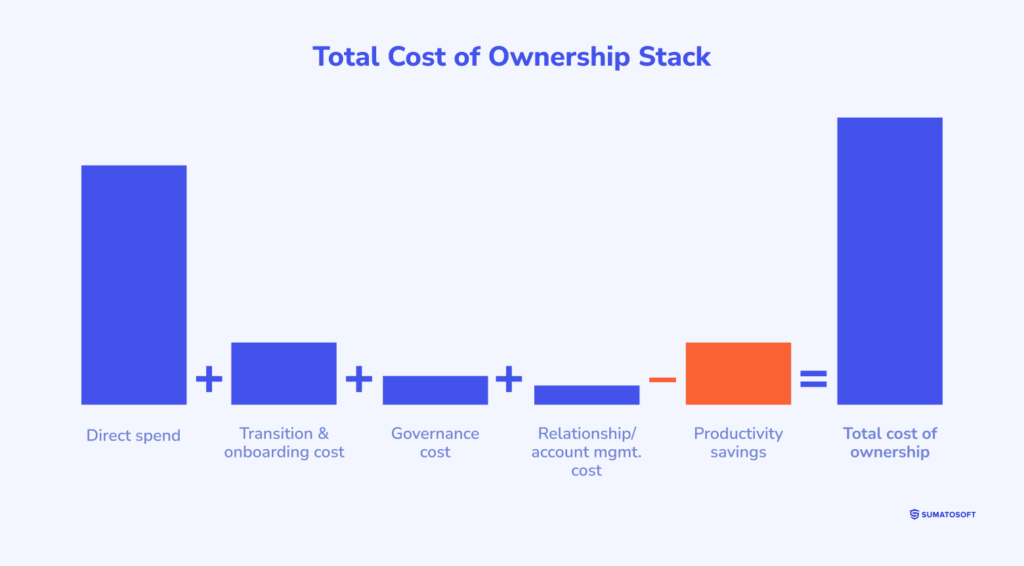
Core Equations
Year-1 ROI (%)

Multi-Year ROI (%) (Undiscounted)

Discounted ROI / Net Present Value
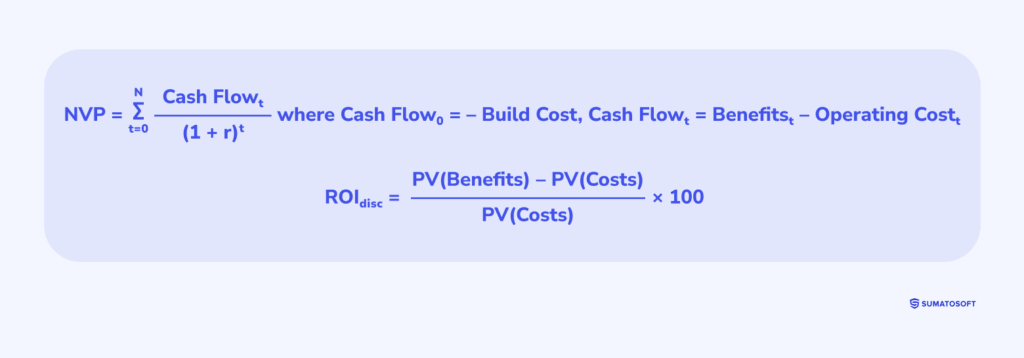
Where r is a discount rate that should match your hurdle rate, which is the minimum rate of return that an investment into software development must achieve to be considered worthwhile.
Payback Period
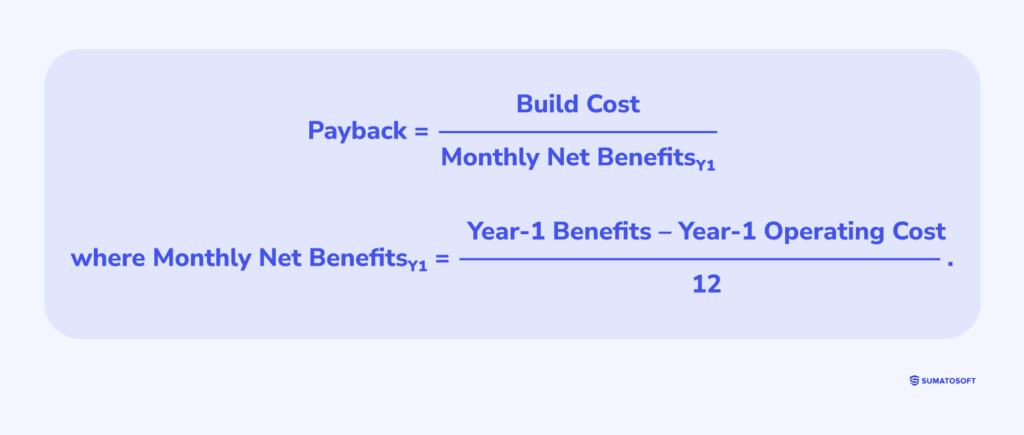
Calculating How Much You Saved with Custom Software
All cases are unique, but we wanted to share formulas for the most frequent ones, so you get an understanding of how to evaluate the outcomes of your investments. Please note that you should use gross margin to model revenue uplift.
- Lead-to-sale uplift (B2B)

- Labor automation

- Support deflection (self-service through chatbots and portals)

- Error reduction or rework

- Downtime avoided (SRE)

ROI in Practice: Real-World Case Studies
What is a Good ROI in Custom Software Projects?
A good ROI for a custom software development project is 5% to 10%. It’s better to calculate ROI for software solutions after a year of implementation. The 5% to 10% range allows beating annual inflation, which is already a good indicator. Depending on the industry and solution purpose, numbers can be way higher, up to 35%. Usually, such a good ROI is expected in retail and e-commerce.
A poor or bad ROI means that a company has lost money as a result of custom software development services. The final verdict should always be done after implementing a solution, but sometimes companies spend too much even during the development phase, and the software never goes into production. We’ll share such cases below.
Cases of Good ROI in Healthcare
OSF HealthCare chatbot project
OSF HealthCare, an integrated health system, implemented a customized virtual assistant on its website to guide patients to the most fitting resources according to their inquiry. This automation allowed OSF to divert calls from its call center, tend to patients’ requests 24/7, and help them check symptoms and schedule appointments.
The integration of the chatbot yielded impressive results: over $2.4M ROI in a year due to contact center cost avoidance, basically free client acquisition, and automated round-the-clock patient access to OSF services.
Asset tracking and management system for Piedmont Healthcare
Piedmont Healthcare is the largest healthcare provider in Georgia, US. However, its rapid growth posed certain challenges: the staff struggled to locate mobile medical equipment and other essential assets needed to care for patients. Piedmont lacked a reliable way to measure equipment utilization system-wide or determine purchasing needs. This led to inefficient clinical workflows, low productivity, and high equipment costs.
To solve these challenges, Piedmont had partnered with Vizzia Technologies to develop a custom solution for asset management.
The result was the standardization of the real-time locating system and optimization of the asset management processes across all Piedmont facilities. The quantifiable ROI turned out to be almost $3M, along with a 90% increase in productivity and improved equipment utilization by more than 20%.
Cases of Good ROI in IoT and Industry
UPS ORION
UPS developed a custom navigation system with a prescriptive route optimization using delivery data, pickup times, past performance, and business rules.
As a result, the drivers slashed 6–8 miles per route per day on more than 70% of approximately 55,000 US routes. The yearly operating cost at full US deployment was reduced by $300–$400M, with every 1 mile cut from average daily routes, saving $50M per year.
Harley-Davidson
A York plant of Harley-Davidson, an American motorcycle manufacturer, boasts a truly remarkable case of optimization. After connecting machines (IIoT) and using AI analytics, the plant was able to reduce build time per motorcycle from 21 days to just 6 hours in a customized production line, all this with nearly 0 defects. It also reduced downtime by around 50% by catching issues proactively.
If you’d like to implement an IoT project that will be successful, you can find which companies are at the top IoT development companies in 2025 in our opinion.
Hartford Steam Boiler Inspection and Insurance Company
In 2021, HSB, a global specialty insurer and reinsurer, achieved an average ROI of 506% by preventing millions of dollars of potential property and equipment losses. The company was able to achieve this through its proprietary insurance-focused IoT program designed to prevent loss and reduce insurance claims.
The program comprises IoT sensors, data dashboards, and proprietary algorithms that monitor property conditions 24/7 and issue actionable alerts when detecting water leaks, potential equipment failure, or other adverse conditions.
An IoT custom development project doesn’t have to be costly to yield impressive results. Here’s our insight into IoT development costs breakdown.
ScaLex
ScaLex, an ERP system developed for a large саr dealer that represents such brands as Toyota and Lexus, contracted SumatoSoft to automate all car dealers’ business processes, including customer support, accounting, human resource management, and data analysis.
To hit the ScaLex objectives, we developed a CRM that included virtual desktops for each employee role interacting with the dealer’s customers. For services and document circulation automation, we developed modules such as “Service”, “Spares”, and “Accounting”.
The project resulted in automated processes for car sales and services, integrated and modernized IT solutions that improve efficiency, reduce operational costs, faster sales cycles, and enhanced customer retention rates, advanced data analysis for better informed decisions, and real-time inventory management for improving supply chain efficiency.
Cases of Bad ROI
Hertz
Car rental giant Hertz hired a custom software development company to revamp its website and develop a mobile app. The new website was due to go live in December 2017, but the project went through several delays until April 2018 and was never delivered in the end.
After the last delay, Hertz decided to terminate the agreement with the software development company and sued it for the $32M in fees paid up to that point.
On top of this five-month delay in failed delivery, Hertz claimed that its software contractor didn’t incorporate a responsive design, which has been the industry standard for years. Whilst the contractor demanded substantial additional fees to deliver the responsive design, since it wasn’t specified in the project requirement, and was deemed to be an additional condition. The contractor also disregarded requirements that were indicated in the initial agreement and delivered code with serious security vulnerabilities and performance problems, as Hertz claimed.
These were just several of the way more issues Hertz supposedly faced.
In our opinion, the key factors of this failure were poor software vendor selection and scope mismanagement. Hertz relied heavily on a single vendor without catching red flags (like missed deadlines and subpar deliverables) early on during the project. The contractor seemingly put junior or inexperienced teams on the project and repeatedly asked for more money to fix issues that should have been in scope. Hertz also lacked technical governance: fundamental design omissions and code quality problems were discovered only late in the project.
Avon
Avon, a multinational company selling cosmetics and skin care products, has commissioned SAP to develop a custom order management system for its sales representatives. The project has been in the works for almost four years. It was halted only after significant business disruption in the Canadian market and not showing a clear ROI, as per an 8-K filing with the SEC (since Avon is a public company).
The project went south after the production stage: the tech worked, but was so user-unfriendly that Avon salespeople refused to work with it and started leaving the company in large numbers.
We think that this failure is a classic case of user experience and change management gone wrong. The software vendor didn’t research the target audience for the tech, so the project failed due to poor user adoption. The target users just rejected it. This means the UX/UI didn’t account for the end-users’ needs or capacities, as well as rollout and training were insufficient to ease the transition.
CityTime
New York City’s project CityTime commissioned Science Applications International Corporation to develop a new IT system for its employees’ timekeeping and payroll. The initial cost of the project was $63M when it started back in 2003. Somehow, the contractor managed to stretch the project until 2011 and spent over $600M. The court found out later that most of that money was effectively wasted due to fraud. The ultimate cost for New York City was nearly $720 million, and even though a working system was eventually delivered, the cost overruns and criminal corruption completely undermined any ROI.
What went wrong is that CityTime became a vehicle for a massive fraud scheme. SAIC’s subcontractors and consultants that were hired to build the system systematically inflated timesheets, overbilled hours, and extended the project schedule to rake in more money. The prime contractor, SAIC, failed to exercise oversight while its subcontractors ran wild with New York City’s funds.
The broader reason that is of interest to us is the lack of transparency and control. Unlike other projects that fail due to technology or requirement issues, this one failed because those in charge put personal gain over project success. Moreover, New York City leadership did not respond quickly to early warning signs. Even as costs skyrocketed year after year, stronger oversight or audits were not implemented until far too late. Essentially, the project’s governance was compromised.
How to Choose a Software Development Company for a Good ROI
We’ve just shared with you how projects fail due to the bad selection of contractors, but how do you choose the right software vendor to make sure your project succeeds?
- Before approaching a software vendor, define your ROI goals, at least basic acceptance metrics, and budget/TCO. Then, map the user groups and an adoption plan.
- When choosing a vendor, go for the one with:
- field interviews and prototypes tested with real users for quality UX/UI
- coding standards, CI/CD pipeline, and test coverage for engineering quality and transparency
- RACI, weekly demos, visible backlog, risk/issue tracking with owners, and due dates for project governance
- increments tied to measurable outcomes and the ability to stop or adjust early for a phased delivery with exit ramps
- pilot with target users, role-based training, success criteria per cohort, enablement plan, help assets, support SLAs, and rollout communications for adoption and training
- relevant case studies, references, and compliance evidence (HIPAA, SOC 2, etc.) for the domain and compliance fit
- clear assumptions, change-budget policy, itemized estimate (build, infra, licenses, support), and TCO for 3–5 years for financial clarity.
- Prepare a watertight contract where you tie milestone payments to verifiable deliverables, include independent code reviews and progress audits, fix non-negotiables, and, most importantly, ensure IP ownership.
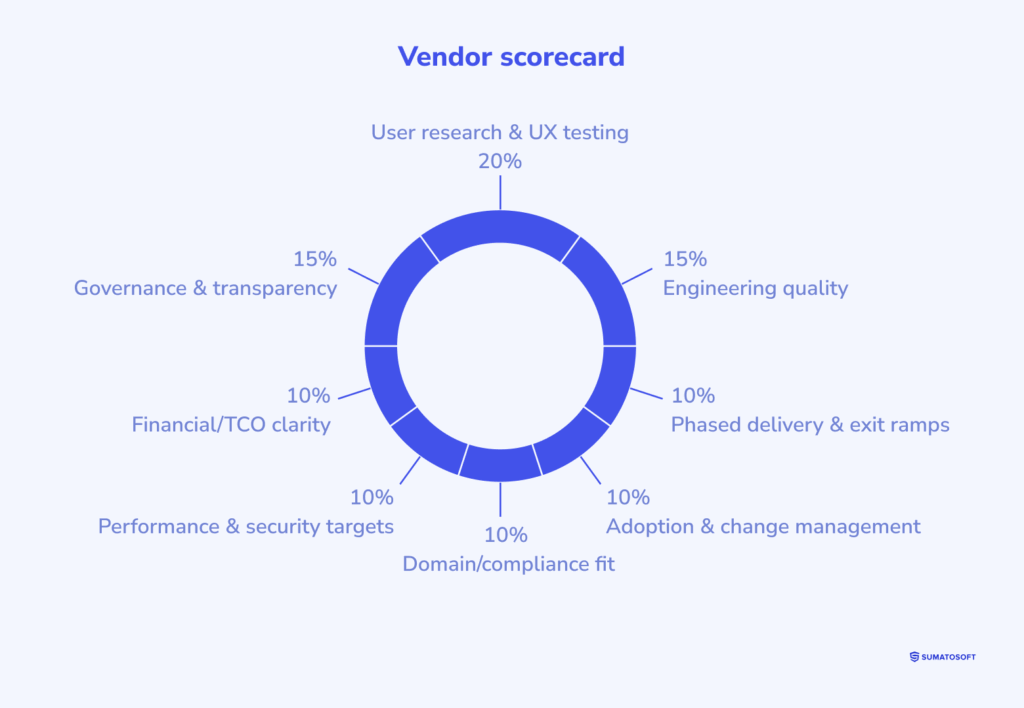
You can learn more about choosing the right vendor for your custom projects in our article Outsource Web Development: Decision-Making Framework 2025.
How SumatoSoft Protects ROI
- We start with discovery and a measurable pilot before full build.
- Every increment is prototype-tested with real users, and adoption is a tracked KPI.
- Clients have repo access from day one, and we follow CI/CD principles, automate tests, and support independent QA. We’ve already broken down the importance of QA in our article Why It Matters: Quality Assurance & Quality Control (QAQC).
- We conduct weekly demos, log risks, and define milestone gates tied to acceptance criteria.
- We create training assets and conduct rollout communications.
We view custom development as an investment: TCO is transparent, the impact on revenue and costs is measurable, and the payback plan is part of the contract. Since 2012, the SumatoSoft team has created 250 solutions for clients from 27 countries across 11 industries, with a 98% satisfaction rate according to surveys. Want to test your value proposition? We’ll start with a brief ROI plan and a pilot. Contact us.
Let’s start
If you have any questions, email us info@sumatosoft.com

